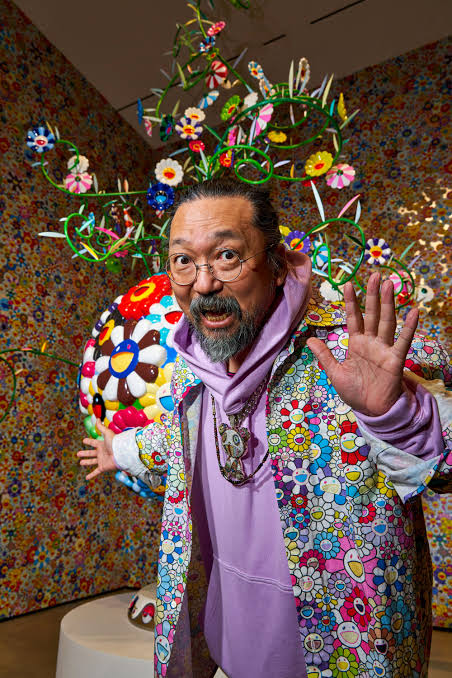Pratiksha Shome
Takashi Murakami, a leading figure in neo-pop art, has always embraced new technology and was an early adopter of crypto and NFTs, but even he acknowledges that he fears AI may render him obsolete.Thanks to his endearing technicolour paintings that blend contemporary anime and manga with traditional Japanese art elements, Murakami, 61, has established himself as a unique brand. His paintings, which are treasured as incisive commentary on the thin boundary between art and business, have sold for millions of dollars, inspired fashion collaborations with Louis Vuitton and Kanye West, and been displayed at some of the greatest institutions in the world. Although it hasn’t always made him popular with Japan’s art world, Murakami enjoys upsetting the status quo. Thanks to software that uses AI, he anticipates yet another wave of transformation.
At the inauguration of a new show at the Gagosian gallery on the outskirts of Paris, he predicted a “dramatic generational change.” Technology makes him think of how the introduction of the Apple II computer in the 1980s uprooted an older generation of designers while empowering others who embraced technology. Although AI would undoubtedly hurt technical trades, he added, “I don’t think it will be able to stop our ideas.” The most absurd ideas, those that even AI cannot produce, will increase in value. That does suggest that power may be shifting away from artists and towards tech developers, who will be able to explore possibilities that are currently difficult to envisage. Artists who produce recognisable works will be forgotten, he warned. “I personally work with a certain level of fear of being replaced one day.”
Ironically, Murakami claims that with his most recent effort in homage to kabuki theatre, he was moved to finally earn some recognition from a more conventional segment of Japanese culture. He was speaking in front of a massive fresco that is 23 metres long by 5 metres high and uses his brilliant, cartoonish style to depict a Kabuki story. He stated, sporting Bermuda shorts and a blazer decorated with his well-known smiling flowers, “I’m not very appreciated in Japan.” “My reputation isn’t great since I’m seen to be giving the rest of the world a distorted impression of Japanese culture. “This is the first time in Japan that I have had such a warm welcome. I felt quite happy.”
His dedication to technical advancement is evident, though. Visitors were expected to get an NFT of a flower-adorned virtual coin at the exhibition opening on Saturday, which required some perseverance given that it was tucked away amid the private jet hangars close to Charles de Gaulle airport. The exhibit features a wall of pixelated images in the NFT style that connect historical figures like Karl Marx and Adam Smith with modern tech titans like Vitalik Buterin and Elon Musk. Like all of his work, they are deceptively straightforward, appear to be printed, but were meticulously painted by hand before being lacquered to hide any traces of the human hand and produce his iconic “Superflat” look. Although he acknowledges that they can be difficult to market, he sees this work as creating a link between conventional and digital art.
“Collectors who have long been admirers of mine obviously struggle with these pixelated drawings, ” he remarked. “But I used Japanese or Eastern rather than Western approaches to make my artwork, and I saw pixel art as a kind of depiction of Japanese culture from the video games of the 1970s.” The cryptosphere is “like a new continent” that is currently being explored. People would need a few more years to adjust, he said.
Source: The Japan Times
To read more about Murakami. Click here






